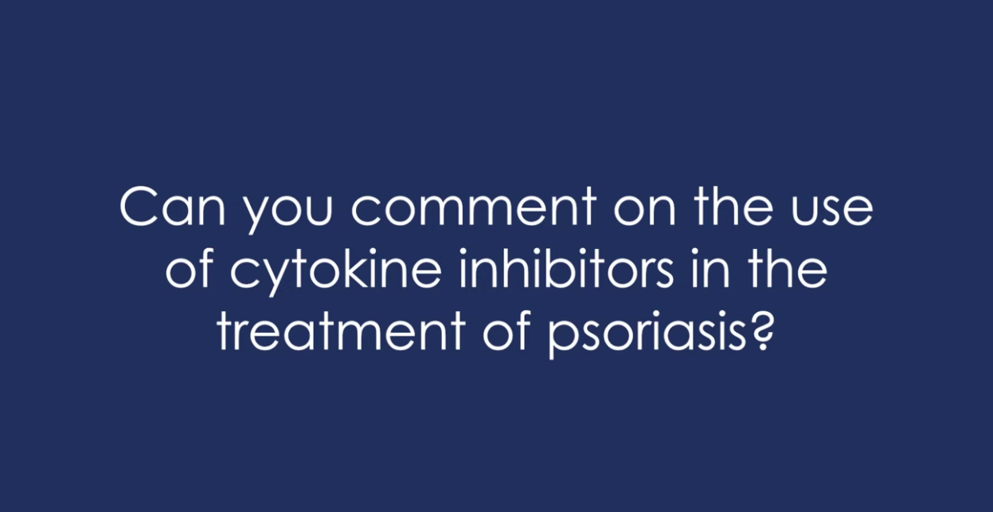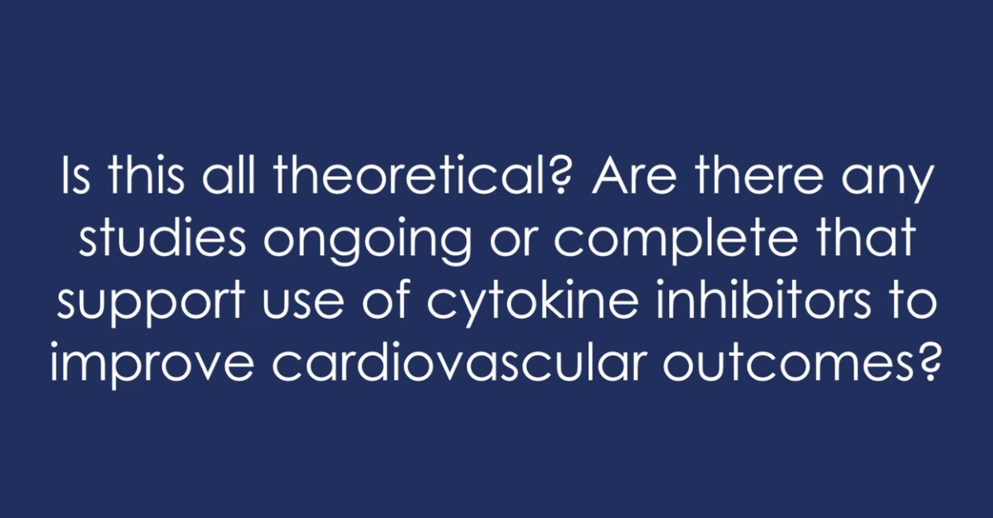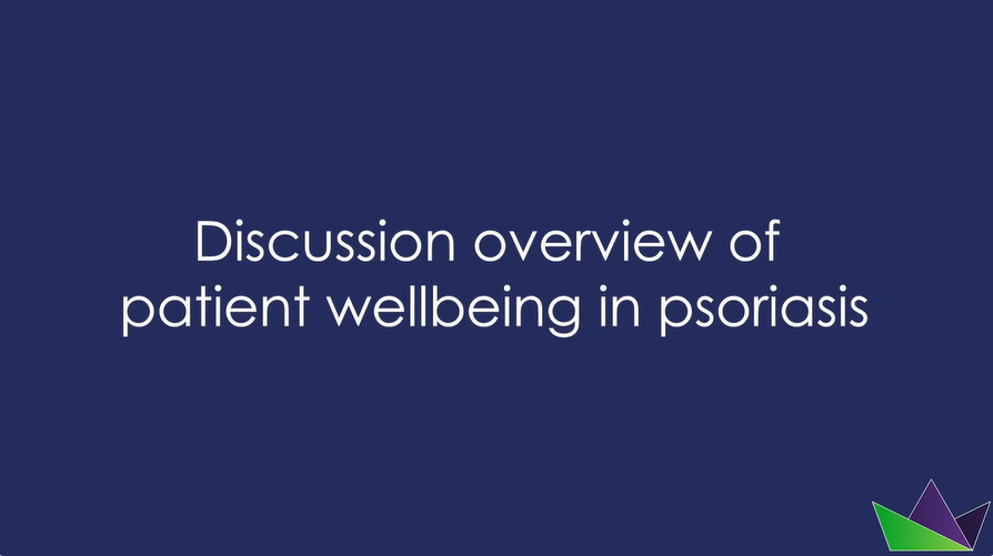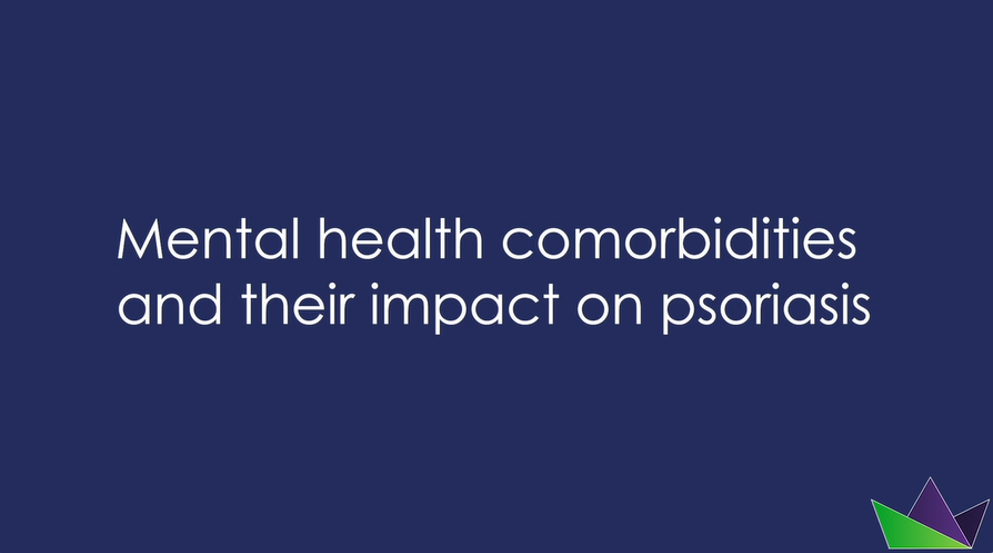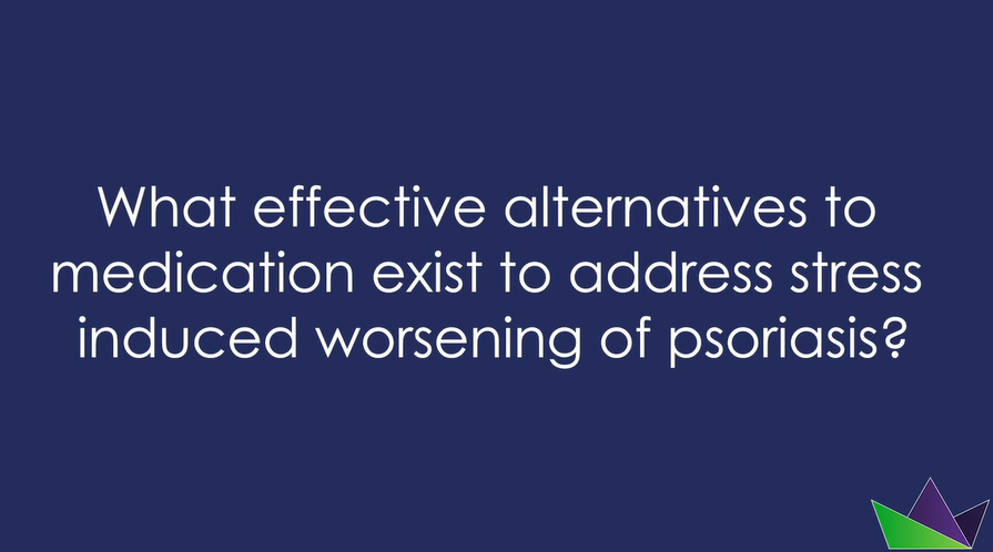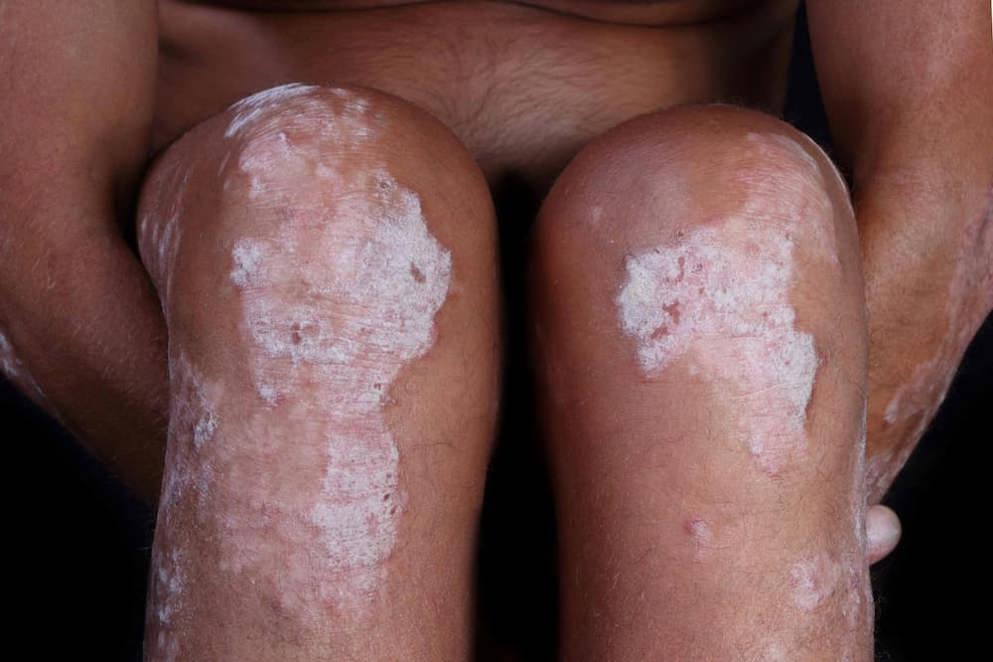
Psoriasis Management
Psoriasis management
Burden of psoriasis
Psoriasis is a chronic inflammatory disease that affects approximately 2% of the population. In the majority of cases, people with psoriasis present with disfiguring, scaling, and erythematous plaques of the skin.
It is defined by the World Health Organisation as a chronic, non-communicable, painful, disfiguring, and disabling disease, for which there is no cure and with great negative impact on patients’ quality of life (QoL)1.
Moderate-to-severe plaque psoriasis (with or without psoriatic arthritis) places significant social, physical and emotional burden on patients’ lives2,3. Despite treatment, many patients with psoriasis continue to experience clinical symptoms and impaired functioning4
With the significant impact on patient’s QoL, psoriasis impacts use of healthcare resources, associated costs, and work productivity5,6.
The visible disfiguration associated with psoriasis, particularly when on exposed areas of the body, leads to a significant psychological impact and reduction in QoL, which can include:
- relationship difficulties
- employment problems
- low self-esteem
- avoidance of social situations and isolation7,8
Patients have reported that itching/scratching, flaking/scaling and skin pain, had a significant impact on their social and emotional lives5.
Depression and anxiety in psoriasis
Psoriasis not only causes highly visible and painful physical symptoms, it is also strongly associated with psychological impairments9.
A UK primary care cohort study that assessed psychiatric morbidity and suicidal behaviour among 56,961 patients with psoriasis and 876,919 patients without psoriasis, found that patients with psoriasis had higher prevalence ratios for10:
- a history of alcohol misuse
- bipolar disorder
- depression
- anxiety disorders
- self-harm
- psychotropic medication prescription
In addition to depression and anxiety, the psychological impact of psoriasis can include stress, sleep disturbances and disturbances in body image11
Results of a cross-sectional study of 107 patients with psoriasis in Germany indicated pruritus can induce significant burden and psychological morbidity11. In this study, participants with moderate/severe pruritus reported more QoL impairments, as well as depression, anxiety, body dysmorphic concerns and less treatment benefit, than those with none/mild pruritus11. However, in those with anogenital involvement, the intensity of pruritus played a less relevant role in the psychological impact of psoriasis. The authors suggested that this may be due to potential use of avoidance coping strategies in this population11.
Stigma and psoriasis
Stigmatisation can play an important role in the lives of people with visible skin diseases such as psoriasis, having a major impact on their daily activities, social life, work, QoL, and emotional and mental health12
While external stigmatisation is a result of negative reactions from others who hold false beliefs and prejudices about the disease, leading to social exclusion and isolation, stigma may also be internalised by individuals with psoriasis12. Through self-imposition of stereotypes and prejudices, this self-stigma can result in self-discrimination that may further compromise QoL.
In visible skin diseases such as psoriasis, disease severity and location/visibility are key drivers of stigma12. That is, the more visible the symptoms (particularly on the hands and face), the higher the impact and stigma12. The intensity of pruritus in people with psoriasis has also been positively associated with increased stigmatisation11.
Impact of psoriasis on work productivity
The Corrona Psoriasis Registry is an independent, prospective, observational cohort launched in collaboration with the National Psoriasis Foundation. In a cross-sectional analysis of the registry, multivariable linear regression models showed that work productivity worsened with increasing disease severity3.
Compared with the mild psoriasis category, patients with moderate-to-severe psoriasis, as assessed by Investigator Global Assessment (IGA) scores, were significantly associated with poorer outcomes in the domains of ‘work hours missed,’ ‘impairment while working,’ and ‘work hours affected’ (all P<0.05),3 as shown in Figure 1.
Figure 1. Impact on Work Productivity and Activity Impairment (WPAI) domains by Investigator Global Assessment (IGA) severity group (Adapted3).
Mortality and psoriasis
Numerous studies have reported the coexistence of psoriasis and other serious systemic diseases13. Growing evidence suggests that cardiovascular disease, obesity, diabetes, hypertension, dyslipidaemia, metabolic syndrome, non-alcoholic fatty liver disease (NAFLD), cancer, anxiety, depression, and inflammatory bowel disease, are found at a higher prevalence in patients with psoriasis compared to the general population13.
A systematic review and meta-analysis found the following pooled relative risks for all-cause mortality14:
- 13 (95% CI 1.09–1.16) in mild psoriasis
- 52 (95% CI 1.35–1.71) in severe psoriasis
The pooled relative risks for cardiovascular mortality were:
- 05 (95% CI 0.92–1.20) in mild psoriasis
- 38 (95% CI 1.09–1.74) in severe psoriasis
For non-cardiovascular causes, mortality risk from the following significantly increased in psoriasis patients, regardless of disease severity:
- Liver disease
- Kidney disease
- Infection
There was also a significantly increased mortality risk associated with neoplasms in people with severe psoriasis and chronic lower respiratory disease in all people with psoriasis14.
Measuring the burden of psoriasis – investigational approaches
Cumulative life course impairment (CLCI)
While some tools have been used to assess psoriasis-related impairment throughout a patient’s lifetime (such as the Major Life Changing Decision Profile [MCLDP] and Life Change Index), these measures are not necessarily dermatology-specific and do not capture the cumulative nature of impairment15.
The concept of cumulative life course impairment (CLCI) refers to the irreversible damage caused by persisting disease burden over time15
Risk factors for CLCI in patients with psoriasis include age, gender, disease duration and severity, early disease onset, systemic treatment, smoking, negative coping and comorbidities16.
Two investigational dermatology-specific measurement tools have been developed to assess CLCI in patients with a chronic skin disease15:
- The DermCLCI-r, to measure persisting CLCI
- The DermCLCI-p, to identify patients at risk for CLCI
These tools remain to be tested psychometrically for validity and reliability15. With further study and validation, they may become helpful tools in routine care to assess cumulative burden and identify patients for early treatment15.
Patient-reported impact of dermatological diseases (PRIDD) measure
Existing patient-reported outcome measures (PROMs) for dermatological conditions may not fully capture aspects of disease impact that are important to patients and have been developed with limited patient input17.
Drawing upon the input of 65 patients across 29 dermatological conditions, Pattinson and colleagues (2022) found the impact of dermatological conditions can affect physical, psychological, social and financial domains, as well as daily functioning and involvement of healthcare17. Using these findings as a basis, this group plans to co-construct a new PRIDD measure with patient input17.
of interest
are looking at
saved
next event
Unmet patient needs in psoriasis
Join Professor Peter van de Kerkhof from Radbound University Nijmegen, Netherlands, as he explores unmet needs in management of patients with moderate psoriasis.
Despite the availability of different treatment options for psoriasis, unmet needs may prevent patients from achieving long-term psoriasis control
Person-centred care requires that therapy is aligned with the patients’ needs/treatment goals. The German Psoriasis registry (PsoBest) has demonstrated that the majority of people with moderate-to-severe psoriasis aspire to a normal everyday life with a low treatment burden18.
Several unmet patient needs have been identified in the field of psoriasis, as summarised in Figure 2.
Figure 2. Unmet needs in management of psoriasis19–26.
Psoriasis undertreatment
National surveys by the National Psoriasis Foundation have previously reported that an estimated 24%–36% of people with moderate psoriasis and 9%–30% of people with severe psoriasis were not receiving treatment27.
The Multinational Assessment of Psoriasis and Psoriatic Arthritis (MAPP) survey suggests that psoriasis is currently undertreated19. The MAPP survey showed that approximately 30% of people with moderate psoriasis, and approximately 20% of patients with severe psoriasis, were only receiving topical treatment. In addition, it was revealed that many patients are not receiving therapy that addresses the underlying inflammation and/or associated co‐morbidities (i.e., cardiovascular disease, psoriatic arthritis, metabolic syndrome)19.
Efficacy of current psoriasis therapies and long-term control
Dermatologists in the United States, Canada, France, Germany, Italy, Spain, and the United Kingdom, have previously cited concerns around the efficacy of currently available therapies as one of the key contributory factors in the unmet treatment needs for patients with psoriasis20. The following treatment factors have been identified as preventing people with moderate-to-severe psoriasis from achieving long-term control21:
- Delays in initiating systemic treatment
- Frequent treatment discontinuation
- Frequent dose escalation
- Frequent dose reduction
In addition, the efficacy from the concomitant use of ≥2 therapies with differing mechanisms of action can fail to achieve desired treatment outcomes21,28.
This highlights the importance of exploring emerging monotherapies, such as IL-17A inhibitors, for achieving improved disease clearance28. Treatment goals that may be achieved through monotherapy, as highlighted by the emergence of new biologic therapies such as IL-17A inhibitors, should not be overlooked28.
Safety and tolerability of current therapies for psoriasis
Physicians in Europe and North America acknowledge that concerns around safety and tolerability of currently available therapies contribute to unmet patient needs20.
Undefined treatment goals/targets in psoriasis
The Medical Board of the National Psoriasis Foundation (NPF) has highlighted an urgent need for psoriasis treatment goals to be established and maintained in daily clinical practice; with defined treatment targets, clinicians and patients can regularly evaluate treatment responses individualised to the patient22.
The NPF observed that while most patients at 6- and 12-month visits were at the ‘acceptable’ (≤3%) body surface area (BSA) response, less than half were at the ‘target’ (≤1%) BSA response, despite systemic therapy29.
The most widely used scale for therapeutic decision making, the Psoriasis Area Severity Index (PASI), does not differentiate moderate from severe disease. A more precise classification of psoriasis disease severity could improve the risk-benefit assessment that informs therapeutic decision making.
Patient satisfaction and adherence
A systematic literature review confirms that adherence rates in psoriasis patients are suboptimal, regardless of treatment type or disease severity, and highlights the need to improve patient adherence and satisfaction with treatment23. In addition, more than half of US people with psoriasis surveyed between 2003 and 2011 were dissatisfied with their treatment27.
Discontinuation of traditional systemic anti-psoriatic agents and interferon have been reported to occur most frequently due to adverse events30.
In US clinical practice, people with moderate-to-severe psoriasis who were receiving biologic monotherapy, adalimumab in combination with methotrexate (MTX), or phototherapy, had higher overall satisfaction scores, whereas those receiving topical therapy alone had significantly lower overall satisfaction scores compared with patients receiving MTX monotherapy31.
Comorbidities in patients with psoriasis
A number of conditions are associated with psoriasis and are hypothesised to be the result of chronic inflammation associated with the skin disease32. People with severe disease are more affected by comorbid conditions than those with milder disease24,25.
It is believed that 73% of psoriasis patients have at least one comorbidity33. Such comorbidities include7:
- metabolic syndrome (type 2 diabetes, hypertension, obesity and dyslipidaemia)
- cardiovascular diseases
- arthritis
- inflammatory bowel disease
- lymphoma
- anxiety and depression
Other emerging comorbidities of psoriasis include chronic obstructive pulmonary disease, peptic ulcer disease, sexual dysfunction, and obstructive sleep apnoea32.
Psoriasis and cardiovascular disease
The risk of severe cardiovascular events is significantly elevated among people with psoriasis. This can be attributed to the unusually high prevalence of cardiovascular disease (CVD) risk factors observed in this group. As a result, it has been found that life expectancy for people with psoriasis is lower, and mortality rates higher than in the general population34.
Patients with psoriasis have a 5-year shorter life expectancy, than those without psoriasis, most frequently due to cardiovascular disease26
Comorbidities are associated with increased mortality in people with both mild and severe psoriasis35. Although cardiovascular disease is the primary factor contributing to excess mortality, other causes of death are markedly elevated in psoriasis, including35:
- kidney disease
- liver disease
- chronic lower respiratory disease
- severe infection
- neurological diseases
Elucidation of the molecular mechanisms underlying this association is still required.
However, in the video clips below, Dr Nehal Mehta, a preventive cardiologist and nuclear cardiologist at the National Heart, Blood and Lung Institute, USA, explains why synergy in the fields of dermatology and cardiology can improve psoriasis outcomes for patients using the knowledge we already have.
Implications of comorbidities on clinical management
Presence and risk of comorbidities in psoriasis patients can have implications for clinical management. For example, obesity's association with dyslipidaemia, hypertension, and increased liver enzymes could be worsened by acitretin, cyclosporine and methotrexate, respectively. Therefore, therapeutic targets that have positive effects on both psoriasis and mechanisms regulating body weight homeostasis may be of great importance to such patients36.
Another example is in the case of people with, or at risk of, renal disease, which should be considered when over-the-counter and/or systemic medications are used in psoriatic patients37.
In addition, screening people with psoriasis for comorbidities may constitute an important part of management. For example, people with moderate-to-severe psoriasis should be screened and aggressively treated for CVD risk factors26.
To help health care professionals address these challenges, psoriasis guidelines have been introduced in response to important clinical questions regarding38–43:
- Undertaking risk assessments
- Screening requirements
- Collaborative working and timely referral to other care providers as necessary
- Patient education around comorbidities
- Psoriasis management and treatment for those with or at risk of comorbidities
- Treatment of comorbidities
Therapeutic use of immunobiologicals can reduce the inflammatory burden observed in psoriasis, which corresponds with reduced prevalence of associated comorbidities. Use of immunobiologicals could therefore inhibit the onset or aggravation of psoriasis-related comorbidities. However, like any other medication, side effects that negatively interfere with such comorbidities should also be taken into consideration44.
See an overview of the latest psoriasis guidelines in Europe and the US
Learn more about the treatment goals and the importance of long-term control in psoriasis
of interest
are looking at
saved
next event
Psoriasis diagnosis and identification
Listen to commentary from Professor Peter van de Kerkhof on the use of Psoriasis Area Severity Index (PASI) scores in clinical practice, particularly for objective severity assessment.
The most established parameter in assessing the severity of skin symptoms in psoriasis is the PASI38–43
PASI is the first step in selecting a treatment strategy, and can provide valuable feedback in measuring long-term patient response to treatment38–43. PASI measures psoriatic disease by the severity (thickness, redness, and scaling), and the extent of the plaque coverage.
Patient response to treatment is measured as improvement in PASI score from baseline38–43. Definitions of PASI 75, PASI90 and PASI100 are provided in Figure 3.
Figure 3. Definitions of PASI 75, PASI90 and PASI10038–43. PASI, Psoriasis Area and Severity Index.
A PASI 75 response is now widely accepted as a clinically meaningful improvement38–43.
In the European S3‐Guidelines, moderate‐to‐severe disease is defined as a PASI >10, and the ‘rule of tens’ (body surface area [BSA] >10%, or PASI >10, or Dermatology Life Quality Index [DLQI] >10) can be applied in the clinical setting for defining severe psoriasis42,43,45,46.
In 2011, the European Consensus proposed criteria to upgrade severity to capture situations where disease manifestations can significantly impair quality of life (QoL)47. These criteria are intended for use in situations where PASI and/or BSA indicate only mild disease47,48. If one or more of these criteria are met, the severity can be upgraded from mild to moderate-to-severe47,48. The upgrade criteria are47:
- involvement of visible areas
- involvement of major parts of the scalp
- involvement of genitals
- involvement of palms and/or soles
- onycholysis or onychodystrophy of at least two fingernails
- pruritus leading to scratching
- presence of recalcitrant plaques
The involvement of visible areas such as the face, scalp, hands and nails, or the presence of severe symptoms, including itching that is not properly topically treated, may require systemic treatment49.
When upgrade criteria are used to reclassify disease severity, some patients can become eligible for systemic therapy that may otherwise be considered off-label treatment47,48. When used in relation to treatment goals, these criteria have also been reported to increase patient satisfaction with their care48.
In clinical practice, a systemic therapy could be indicated, even if PASI or BSA is lower than 1049
A Physician Global Assessment (PGA) score to evaluate disease severity can help clinicians to rapidly evaluate psoriasis severity42. However, it has been suggested that a more precise classification of psoriasis disease severity will improve the risk-benefit assessment that informs therapeutic decision making46.
Signs and symptoms of psoriasis
There are several main types of psoriasis, each presenting with different symptoms and characteristics (Figure 4). A person with psoriasis may present with more than one type, which may also change over time50.
Figure 4. Types of psoriasis7,38,50,51.
Psoriasis diagnosis and severity assessment
Diagnosis of psoriasis is primarily on clinical grounds, based on examination of plaques or skin lesions with the characteristic silvery scales8,52,53
Pathology, serology, or imaging tests are usually not required for the diagnosis of psoriasis8,52,53.
Psoriasis severity depends on a number of clinical factors, and the disease is associated with a range of comorbidities and risk factors54.
An assessment that accurately reflects disease severity is important, as current psoriasis guidelines recommend that treatment should reflect the severity of disease rather than being initiated using a stepwise approach41–43,55.
Body surface area
The severity of psoriasis is generally determined using BSA measurements. Psoriasis is commonly classified as mild, moderate, or severe, depending on the proportion of BSA affected, as described in Table 1 below50.
Table 1. Classification of disease severity by BSA affected (Adapted50). BSA, body surface area.
However, if a patient’s psoriasis covers only a small area, but is very visible (for example, on the face), or debilitating (the palms of the hands and soles of the feet are affected), then the psoriasis could be disabling, and thus still be considered a severe case50. Therefore, it is important to measure the impact on the patient’s QoL and BSA.
Impact of psoriasis on quality of life
Subjective measures that assess impairment in QoL, or difficulties performing activities of daily living, including those identifying the presence of cardio-metabolic comorbidities, are important in estimating the impact psoriasis is having on the individual54.
The score most commonly used to assess the impact of psoriasis on QoL is the Dermatology Life Quality Index (DLQI)56.
Assessment tools in psoriasis
Several tools are available for clinicians to assess the severity of psoriasis, and patient response to treatment. Some key assessment tools are summarised in Table 2.
Table 2. Key tools to classify disease severity and assess treatment response38–43,57. BSA, body surface area; DLQI, Dermatology Life Quality Index; IGA, Investigator's Global Assessment; PASI, Psoriasis Area and Severity Index; PGA, Physician Global Assessment.
Psoriasis Area and Severity Index
The gold standard for assessment of psoriasis in the clinic is the PASI.
Identifying a patient’s PASI score represents a necessary first step in selecting a treatment strategy, and provides valuable feedback in measuring long-term response to treatment38–43.
A PASI 75 response is considered a clinically meaningful improvement38–43.
The following steps are required to generate a PASI score58,59:
- Divide the body into four areas: head, arms, trunk (to groin), and legs (to top of buttocks)
- Generate an average score for the erythema, thickness, and scale for each of the four areas (0 [clear]–4 [severe])
- Sum the scores of erythema (redness), induration (thickness), and desquamation (scaling) for each area
- Generate a percentage for skin covered for each area and convert that to a 0–6 scale: 0=0%, 1=<10%, 2=10–<30%, 3=30–<50%, 4=50–<70%, 5=70–<90%, 6=90–100%
- Multiply the total score (0–12) for each area by the coverage (0–6) for that area, and multiply that by 0.1, 0.2, 0.3, and 0.4 for head, arms, trunk and legs, respectively
- Sum these calculations to get the total PASI score (0–72)
An online calculator for deriving PASI scores is available here (external link).
The future of PASI assessment
European S3 Guidelines on the systemic treatment of psoriasis propose a 75% or more improvement in PASI from baseline (PASI 75), and a DLQI of 0 or 1 as the primary treatment goals38–43.
Many clinicians consider a PASI 75 response to be a clinically meaningful improvement in patients with severe psoriasis38–43,49. However, achieving a PASI 90 response has a dramatic impact on the QoL of people with psoriasis60,61, and the greatest enhancements are seen in patients reaching PASI 10062.
In addition to improvements in symptom severity and QoL, the number of 100% symptom-free days have been shown to be significantly higher for patients achieving PASI 100 following modern biologic therapy63.
As observed in the 2019 guidelines developed by the French Society of Dermatology on the use of systemic treatments for moderate‐to‐severe psoriasis, new criteria have emerged64:
- Absolute PASI ≤3: this parameter is easier to calculate than the PASI 75 response, is independent of variations in baseline severity and better reflects the clear or almost clear status (or a Physician Global Assessment [PGA] score of 0–1) of the patient
- DLQI 0 or 1: have been proposed as scores indicating the absence of an impact of psoriasis on QoL
- PASI 90 and PASI 100 responses: these criteria have emerged as a result of the high efficacy of some of the most recent biological agents
- Several authors question the clinical relevance of PASI 90 and 100, compared to other criteria, such as PASI 75
Investigator's Global Assessment/Physician Global Assessment scale
The 5-point Investigator's Global Assessment (IGA) scale is a modified tool developed with input from regulatory authorities and clinical trial investigators for evaluating plaque psoriasis severity in clinical trials57
The IGA has been well validated as a measure of disease severity and meets the need for a clinically meaningful measure of success for psoriasis treatment studies57. As the PGA is simpler than the more detailed PASI assessment, it is better suited for the clinic42,65.
The PGA is a 7-point scale (Table 3) ranging from clear (0) to severe (7), and in most versions of the PGA, the individual elements of psoriasis plaque morphology or degree of BSA involvement are not quantified58. In clinical trials, treatment success is often defined as achieving a static PGA (sPGA) score of 0 or 166.
Table 3. Physician Global Assessment (PGA) (Adapted58).
Combining Physician Global Assessment and Body Surface Area assessments
Despite the PGA being considered more practical than PASI42, it is limited by the lack of assessment of body surface involvement. In contrast, BSA doesn’t measure the quality or morphology of lesions so is not suitable as a sole measure. Therefore, a gap remains in the need for a practical, uniform, validated, and standardised outcome measure, that can be used both in clinical practice and in clinical trials.
Some feel this unmet need could be solved with the product of PGA and BSA (PGA x BSA); the tool has been previously reported to be a simple and sensitive measure of psoriasis severity, and is increasingly being used to simply measure psoriasis severity67–72.
Identifying comorbidities
Past or current comorbid conditions can influence management and choice of treatment for psoriasis73,74, and can also influence an individual’s risk of adverse effects while on treatment73.
Prior to commencing treatment, it is recommended to obtain a patient history, including past and current comorbidities, and concomitant medications75. For example, comorbidities may include anxiety, depression, cardiovascular disease, inflammatory bowel disease, psoriatic arthritis, cancer, kidney disease or liver disease74–76.
For all people with psoriasis, screening for cardiovascular risks factors, including diabetes, hypertension and dyslipidaemia, is recommended76. Cardiovascular risk factors should be discussed with the patient77 and, where appropriate, individualised advice on prevention, healthy lifestyle, and support for behavioural change should be offered77.
of interest
are looking at
saved
next event
Patient wellbeing in psoriasis
What are key wellbeing considerations that should be taken into account when managing patients with psoriasis, why are they important, and what tools are available to assess wellbeing in psoriasis?
In this section, gain insights from multiple perspectives by listening to video interviews, download our infographic on implementing these considerations in clinical practice, and learn about investigational approaches to incorporate the patient perspective into assessments of treatment benefit.
Insights into wellbeing considerations in psoriasis
Join Professor Ulrich Mrowietz (a dermatologist), Professor Jordi Quoidbach (a wellbeing expert) and Jessica Towner (a person living with psoriasis) in this series of video clips, as they discuss the wellbeing considerations for people with psoriasis. In this dynamic and frank discussion, each speaker offers unique experience and valuable insights into the core clinical issue of mental health and wellbeing in people with psoriasis. Key takeaways include:
- People with psoriasis often suffer comorbid mental health conditions
- PASI score does not correlate with overall patient wellbeing
- The WHO-5 questionnaire can be used to assess patient wellbeing in clinical practice
- Patients need better mental health support
Key highlights and insights on wellbeing in psoriasis
Discussion introduction and highlights
Key takeaways from different perspectives
Full discussion
Chapter 1 – Introduction
Chapter 2 – Impact of psoriasis on patient happiness and wellbeing
Chapter 3 – Measurements of happiness and wellbeing in people with psoriasis
Chapter 4 – Impact of psoriasis on mental health
Chapter 5 – Relationship between stress and psoriasis symptom flare-ups
Chapter 6 – Alternative approaches to manage stress and inflammation in psoriasis
Chapter 7 – Improve access to psychological support in people with psoriasis
Chapter 8 – Utilising online resources to support psoriasis patient mental health
Chapter 9 – The importance of asking psoriasis patients, “Are you happy?”
Chapter 10 – Psychological support options for people with psoriasis
Chapter 11 – Concluding remarks regarding patient happiness and wellbeing
Assessing wellbeing of people with psoriasis in clinical practice
The downloadable infographic below highlights the importance of happiness and wellbeing in people with psoriasis and the relationship between stress and symptom flare-up. It highlights simple ways that clinicians can implement wellbeing checks to improve their patients’ mental health and treatment outcomes.
Download the patient wellbeing infographic
To obtain a more complete picture of how psoriasis may be affecting the person’s physical, psychological and social wellbeing, it may also be helpful to ask77:
- How their psoriasis affects aspects of their daily life
- How the person is coping with their condition and treatment/s
- If they need further advice or support
- If they feel psoriasis has an impact on their mood, or causes them distress
- If their condition has any impact on their family or carers
Incorporating the patient perspective into wellbeing in psoriasis
Is subjective wellbeing valued as an important treatment outcome by patients?
In a small, single-centre qualitative study of 11 people with psoriasis, the importance of subjective wellbeing as a treatment outcome was assessed with semi-structured qualitative telephone interviews, using the validated Daily Experience Sampling Questionnaire (DESQ)78. Participants were asked to reflect on the relative importance of subjective wellbeing as a treatment goal, and its relative importance when compared with other treatment outcomes78.
The results of this study indicated that subjective wellbeing is a relevant indicator of treatment benefit in patients with psoriasis 78.
In a small single-centre qualitative study of people with psoriasis, most participants (>90%) considered subjective wellbeing as a central aspect of treatment benefit – either as the most important treatment goal or as an indirect benefit indicator78
The authors considered these findings to support the use of subjective wellbeing measures, such as the DESQ, to capture patient-relevant benefits of psoriasis treatment alongside other outcome measures used in practice 78.
In addition, results of a real-world nationwide survey of patients with psoriasis (n = 392) and dermatologists (n = 32) from Italy showed79:
- Around 24% of patients recalled taking a questionnaire to assess the impact of psoriasis on their QoL
- Around 40% did not consider their disease-related QoL had been taken into consideration by their dermatologist
- Almost 33% of patients considered their treatment as inadequate to improve the signs and symptoms of their psoriasis
Dermatologists noted the limited time during visits as a key barrier to the use of structured tools and questionnaires in practice79. The authors of the study suggested placing a higher priority on patient QoL may assist with tailoring treatment to the individual, and use of simple yet comprehensive questionnaires may facilitate treatment choice79.
Psychometric properties of the WHO-5 questionnaire for wellbeing assessment
In a longitudinal study of 408 patients with psoriasis, the psychometric properties of the WHO-5 questionnaire were tested for assessment of wellbeing80. When used at both baseline and 12 weeks’ follow up, the questionnaire showed high reliability and acceptable validity relating to both health-related QoL and clinical severity (as measured via DLQI and PASI, respectively)80.
The authors of the study considered these results to indicate the WHO-5 can contribute to understanding of patient wellbeing in routine care of people with psoriasis, noting it remains to be further validated in the context of a clinical trial 80.
A real-world study using WHO-5 to assess wellbeing as a treatment outcome in psoriasis
A real-world, multinational, prospective observational study (the POSITIVE study, NCT04823247) has been initiated to evaluate the impact of treatment on patient-reported wellbeing as a primary endpoint81,82. Using the WHO-5 questionnaire to measure wellbeing, more than 700 adults with moderate-to-severe psoriasis will be treated with tildrakizumab and followed for 24 months82,83. Drawing on the people-centred approach advocated by WHO, secondary endpoints will include physician’s satisfaction, partner’s wellbeing, the patient’s perspective on long-term benefits of treatment on aspects including QoL, symptoms, and work productivity and activity impairment due to psoriasis82.
With an estimated study completion date in April 202481, results of this ongoing study are expected to improve understanding the impact of psoriasis on patients and their close environment82. The results may also help to provide new tools for dermatologists to enhance the patient-clinician relationship82.
Expert opinion on wellbeing in psoriasis
Professor of Dermatology, Ulrich Mrowietz, discusses how physicians can take into account patient wellbeing to assess the impact of psoriasis in a more people-centric way, and explores the POSITIVE study in more detail.
How should physicians assess the impact of psoriasis in a more person-centric way?
How are measurement tools like PASI and DLQI used in the real world, and what is their relationship with patient reported outcomes?
Do patients see a difference when filling out a negative versus a positive questionnaire?
What is the POSITIVE study and what makes it evolutionary and unique among psoriasis studies?
Is the WHO-5 questionnaire new in medicine?
Learn more about the experts featured in the Psoriasis Academy
Key takeaways on wellbeing in psoriasis
People with psoriasis often suffer from comorbid mental health conditions, such as depression and chronic stress, which worsen symptoms and adversely impact QoL. DLQI and HRQoL measures do not effectively capture this relationship, nor the overall wellbeing and happiness of the patient. Similarly, there is no direct correlation between PASI score and wellbeing and happiness. These oversights negatively impact on the outcome of treatment.
A major barrier of patient access to psychological support is a lack of recognition for this need from the treating dermatologist. To address this, utilising a measurement tool such as the WHO-5 during routine consults, initiating a discussion with the patient by asking about their mental status, and referring the patient for psychological support if needed may improve outcome.
The importance of patient wellbeing and psychological support as part of psoriasis treatment has been shown in clinical trials examining cognitive behavioural therapy and mindfulness to alleviate stress, depression, and anxiety
Explore expert and patient insights on incorporating wellbeing into psoriasis management
Learn more about the experts featured in the Psoriasis Academy
COVID-19 and psoriasis
Learn from expert videos and podcasts how to answer your patients’ questions about the COVID-19 pandemic
Join experts Professor Ulrich Mrowietz and Professor Diamant Thaçi as they explore considerations for psoriasis management with systemic and biologic immunosuppressive and immunomodulatory treatment in the age of COVID-19.
About COVID-19 and psoriasis
Click here to watch videos with German subtitles
Click on the list icon in the video player (bottom, right-hand side) to directly access the answer to the below questions.
- Have many of your patients been in contact with you regarding COVID-19 and treatment for their psoriasis? (00:00 - 01:35)
- What additional steps have you taken to support your patients during the current SARS-CoV-2 pandemic? (01:35 - 02:08)
- Do you recommend any particular preventive measures for patients with psoriasis during the current SARS-CoV-2 pandemic? (02:08 - 02:47)
- What are the risk factors for a severe course of COVID-19? (02:47 - 04:06)
- In your opinion, should patients with psoriasis who are taking immunosuppressant drugs stop treatment to reduce their risk of severe COVID-19? (04:06 - 05:08)
- In your opinion, are patients with psoriasis taking immunomodulatory rather than pan-immunosuppressant systemic treatment at reduced risk of severe COVID-19? (05:08 - 06:02)
- Do you think that immunosuppressant treatments may be beneficial given the ‘cytokine storm’ caused by the virus in severe COVID-19? (06:02 - end).
In this part of our expert interview, we asked Professor Ulrich Mrowietz (Head, Psoriasis Centre, University Medical Centre Schleswig-Holstein, Germany) some key questions around the impact of COVID-19 for patients and their treatment. These included questions about whether patients should start and continue their treatment, and what to do if they are unable to attend scheduled appointments.
We also asked Professor Mrowietz about the risk factors for severe COVID-19, and whether targeted psoriasis treatments could be of use in treating the ‘cytokine storm’ observed in patients with severe COVID-1984.
COVID-19 and psoriasis treatments
COVID-19 and fumaric acid esters in moderate-to-severe psoriasis
Click here to watch videos with German subtitles
Click on the list icon in the video player (bottom, right-hand side) to directly access the answer to the below questions.
- Would you recommend starting a patient on dimethyl fumarate (DMF) during the pandemic? (00:00 - 01:53)
- In your opinion, is there an elevated risk for infections in patients taking DMF? (01:53 - 03:02)
- Do you think there are any patient groups in which DMF treatment requires modification? (03:02 - 04:30)
- If DMF treatment has been discontinued for any reason, how should treatment be re-initiated? (04:30 - 05:45)
- What should dermatologists do if their patients have missed routine monitoring appointments because of the SARS-CoV-2 pandemic? (05:45 - 06:48)
- What would you recommend if a patient on DMF treatment develops symptoms suggestive of a viral respiratory infection, e.g., coughing, sore throat and rhinorrhoea? (06:48 - 07:39)
- What would you recommend if a patient on DMF treatment has symptoms of COVID-19, e.g., persistent cough, fever? (07:39 - 08:23)
- Are there any treatments for the symptoms of COVID-19 that would interact with DMF treatment? (08:23 - end).
The fumaric acid ester treatment dimethyl fumarate (DMF) is a systemic treatment for moderate-to-severe psoriasis, which is widely used in Northern Europe, particularly in German-speaking countries and the Netherlands85.
In this part of our expert interview, we asked Professor Mrowietz some pivotal questions on the impact of COVID-19 for patients and DMF treatment. These included questions about initiating treatment during the pandemic, and how to manage the regular blood count appointments required to monitor leukocyte and lymphocyte counts86.
We also asked Professor Mrowietz about the SARS-CoV-2 infection risk for patients on DMF treatment and any potential drug interactions for patients with confirmed COVID-19.
COVID-19 and biologic treatments for moderate-to-severe psoriasis
Click here to watch videos with German subtitles
Click on the list icon in the video player (bottom, right-hand side) to directly access the answer to the below questions.
- Would you recommend starting a patient on a biologic during the SARS-CoV-2 pandemic? (00:00 - 02:05)
- Do you think there are any patient groups in which ongoing biologic treatment should be stopped? (02:05 - 03:04)
- Would you recommend any additional monitoring for patients with ongoing biologic treatment during the SARS-CoV-2 pandemic? (03:04 - 04:37)
- During the SARS-CoV-2 pandemic, which factors are important for dermatologists to consider when selecting a biologic for patients with psoriasis? (04:37 - 06:02)
- What is the role of the different biologic treatment targets with regard to the anti-viral immune response? (06:02 - 07:05)
- In your opinion, what insights from the safety profile of IL-23 biologics may be helpful during the current pandemic? (07:05 - 08:13)
- In your opinion, how does the dosing interval impact the suitability of a biologic treatment during the SARS-CoV-2 pandemic? (08:13 - 09:20)
- What would you recommend if a patient on an IL-23 biologic develops symptoms suggestive of a viral respiratory infection, e.g., coughing, sore throat and rhinorrhoea? (09:20 - 10:36)
- What would you recommend if a patient on an IL-23 biologic has symptoms of COVID-19, e.g., persistent cough, fever? (10:36 - end).
Psoriasis is a systemic inflammatory disease. Discontinuation of biologic treatment could lead to a worsening of symptoms and a lower efficacy in people with psoriasis after treatment interruption87.
We asked Professor Mrowietz several questions on COVID-19 relevant to biologic treatment for psoriasis. These included questions about the SARS-CoV-2 infection risk for patients on biologic treatment and whether to suspend biologic treatment during active infection.
Professor Mrowietz discusses factors to consider when selecting a biologic during the COVID-19 pandemic, with a longer dosing interval, such as that for IL-23 biologics, being advantageous when social distancing is required.
Effectiveness of biologic therapies with reduced dosing schedule during COVID-19
Join our expert, Professor Diamant Thaçi (Director, Institute and Comprehensive Center for Inflammation Medicine, University of Lübeck, Germany), and find out how the COVID-19 pandemic has impacted physicians and their patients. Learn about the essential need for greater information, education, and continuous treatment during this time as well as the impact of COVID-19 on making treatment decisions.
Risk of COVID-19 in people with psoriasis
Do people with psoriasis face a greater risk of catching or developing severe cases of the disease? Join our expert to stay up to date with the latest literature on managing patients during the COVID-19 pandemic, and find out about the dangers of undertreatment, the need for vaccinations, and the risks of comorbidities.
Podcasts on COVID-19 and psoriasis
Join our moderator, Dr Julia-Tatjana Maul, and listen to our podcasts to hear:
- Professor Ulrich Mrowietz share guideline updates during the COVID-19 pandemic
- Dr Christian Greis discuss online patient consultations with the derma2go platform
- Professor Ricardo Romiti explain his role in the Global Psoriasis Atlas in Latin America
In this series of podcasts moderated by Dr Julia-Tatjana Maul (Senior Dermatologist; Head, Psoriasis Clinic and Clinical Trials Team, University Hospital of Zürich, Switzerland), the impact of the SARS-CoV-2 pandemic is discussed with her guests Professor Ulrich Mrowietz , Dr Christian Greis, (Dermatological Resident, University Hospital of Zürich, Switzerland), and Professor Ricardo Romiti (Clinical Professor of Dermatology; Head, Psoriasis Unit, University Hospital of São Paulo, Brazil).
- Episode 1: Professor Mrowietz talks about COVID-19 and systemic treatment
- Episode 2: Dr Greis discusses teledermatology and the derma2go platform
- Episode 3: Professor Romiti discusses the Global Psoriasis Atlas and COVID-19 in South America
These podcasts were created independently by EPG Health with support from Almirall S.A. This content belongs to EPG Health and is not to be copied. All Rights Reserved.
Episode 1: COVID-19 and systemic therapies for psoriasis
In Episode 1, Professor Mrowietz describes the guideline updates available regarding COVID-19 for patients on systemic therapy for psoriasis (available at this external link). Patients should continue their systemic treatment with routine monitoring, as there is no evidence that they are at increased risk of SARS-CoV-2 or any other infection.
Professor Mrowietz discusses the comorbidities that could put patients at higher risk of SARS-CoV-2 infection, and the use of personal protective equipment during patient consultations. There is currently limited guidance for the use of vaccines (particularly live vaccines) in people with psoriasis on systemic treatments, and Professor Mrowietz provides some recommendations on this topic.
Episode 2: Teledermatology
In this episode, Dr Greis explains how the derma2go platform (available at this external link) works for online patient consultations for a range of dermatological conditions.
Dermatologists are able to set up their own online clinics on derma2go and link to their websites. This means that doctor-patient consultations are still possible during the SARS-CoV-2 pandemic with patients able to get their prescriptions. This digital alternative allows physicians to work with more flexibility, and is popular with patients as waiting times are reduced. A 2018 study showed that over 75% of patients requested digital consultations88.
Dr Greis advises on how patients can take clear images of their psoriasis, and how physicians should comply with data protection requirements.
Episode 3: Global Psoriasis Atlas (GPA) and COVID-19
Professor Romiti explains his role as a regional coordinator of the Global Psoriasis Atlas (GPA) in Latin America. The GPA is a collaboration between the International League of Dermatological Societies (ILDS), the International Federation of Psoriasis Associations (IFPA), and the International Psoriasis Council (IPC), with the mission of ensuring that people with psoriasis have access to the best available care wherever they live in the world.
Professor Romiti notes the prevalence of psoriasis in Brazil is currently 1.3%89. There are many challenges for people with psoriasis in Latin America. These include the limited numbers of doctors, long distances to travel for treatment and tuberculosis, tropical diseases (including Dengue), and now COVID-19.
With this podcast being recorded following the COVID-19 ‘peak’, Professor Romiti describes over 200,000 cases of SARS-CoV-2 infection, and over 15,000 deaths just in Brazil, with his hospital effectively being partitioned in separate buildings to cope with the pandemic. Teledermatology is not always an option in remote areas. Patients may be concerned that they are at greater risk of SARS-CoV-2 infection because of their psoriasis or treatment.
Professor Romiti describes the recent guidelines of the Brazilian Society of Dermatology,90 and the consistent stance of maintaining biologic therapy if there are no COVID-19 symptoms, but trying to lower the dose of immunosuppressive treatments such as methotrexate and ciclosporin.
Learn more about the treatment goals and the importance of long-term control in psoriasis
Learn more about the experts featured in the Psoriasis Academy
References
- Organization WH. Global report on psoriasis. World Health Organization. 2016.
- Bulat V, Šitum M, Delaš Aždaji M, Lovri I, Dediol I. Study on the Impact of Psoriasis on Quality of Life: Psychological, Social and Financial Implications. 2020.
- Strober B, Greenberg JD, Karki C, Mason M, Guo N, Hur P, et al. Impact of psoriasis severity on patient-reported clinical symptoms, health-related quality of life and work productivity among US patients: Real-world data from the Corrona Psoriasis Registry. BMJ Open. 2019;9(4). doi:10.1136/bmjopen-2018-027535.
- Schaefer CP, Cappelleri JC, Cheng R, Cole JC, Guenthner S, Fowler J, et al. Health care resource use, productivity, and costs among patients with moderate to severe plaque psoriasis in the United States. J Am Acad Dermatol. 2015;73(4):585-593.e3.
- Pariser D, Schenkel B, Carter C, Farahi K, Brown TM, Ellis CN. A multicenter, non-interventional study to evaluate patient-reported experiences of living with psoriasis. Journal of Dermatological Treatment. 2016;27(1):19–26.
- Korman NJ, Zhao Y, Pike J, Roberts J. Relationship between psoriasis severity, clinical symptoms, quality of life and work productivity among patients in the USA. Clin Exp Dermatol. 2016;41(5):514–521.
- Boehncke WH, Boehncke S. More than skin-deep: The many dimensions of the psoriatic disease. Swiss Medical Weekly. 2014;144. doi:10.4414/smw.2014.13968.
- Cohen SN, Baron SE, Archer CB. Guidance on the diagnosis and clinical management of psoriasis. Clinical and Experimental Dermatology. 2012;37(SUPPL. 1):13–18.
- Dalgard FJ, Gieler U, Tomas-Aragones L, Lien L, Poot F, Jemec GBE, et al. The Psychological Burden of Skin Diseases: A Cross-Sectional Multicenter Study among Dermatological Out-Patients in 13 European Countries. Journal of Investigative Dermatology. 2015;135(4):984–991.
- Parisi R, Webb RT, Kleyn CE, Carr MJ, Kapur N, Griffiths CEM, et al. Psychiatric morbidity and suicidal behaviour in psoriasis: a primary care cohort study. British Journal of Dermatology. 2019;180(1):108–115.
- Silva N da, Augustin M, Hilbring C, Stülpnagel CCB, Sommer R. Psychological (co)morbidity in patients with psoriasis: the impact of pruritus and anogenital involvement on symptoms of depression and anxiety and on body dysmorphic concerns – a cross-sectional study. BMJ Open. 2022;12(9):e055477.
- Germain N, Augustin M, François C, Legau K, Bogoeva N, Desroches M, et al. Stigma in visible skin diseases – a literature review and development of a conceptual model. Journal of the European Academy of Dermatology and Venereology. 2021;35(7):1493–1504.
- Ni C, Chiu MW. Psoriasis and comorbidities: Links and risks. Clin Cosmet Investig Dermatol. 2014;7:119–132.
- Dhana A, Yen H, Yen H, Cho E. All-cause and cause-specific mortality in psoriasis: A systematic review and meta-analysis. J Am Acad Dermatol. 2019;80(5):1332–1343.
- Braren-von Stülpnagel CC, Augustin M, Westphal L, Sommer R. Development of measurement tools to assess cumulative life course impairment in patients with chronic skin diseases. Journal of the European Academy of Dermatology and Venereology. 2023;n/a(n/a). doi:https://doi.org/10.1111/jdv.18977.
- von Stülpnagel CC, Augustin M, Düpmann L, da Silva N, Sommer R. Mapping risk factors for cumulative life course impairment in patients with chronic skin diseases – a systematic review. Journal of the European Academy of Dermatology and Venereology. 2021;35(11):2166–2184.
- Pattinson R, Hewitt RM, Trialonis-Suthakharan N, Chachos E, Courtier N, Austin J, et al. Development of a conceptual framework for a Patient-Reported Impact of Dermatological Diseases (PRIDD) Measure: A qualitative concept elicitation study. Acta Derm Venereol. 2022;102:adv00823.
- Blome C, Gosau R, Radtke MA, Reich K, Rustenbach SJ, Spehr C, et al. Patient-relevant treatment goals in psoriasis. Arch Dermatol Res. 2016;308(2):69–78.
- Lebwohl MG, Kavanaugh A, Armstrong AW, Van Voorhees AS. US Perspectives in the Management of Psoriasis and Psoriatic Arthritis: Patient and Physician Results from the Population-Based Multinational Assessment of Psoriasis and Psoriatic Arthritis (MAPP) Survey. Am J Clin Dermatol. 2016;17(1):87–97.
- Van De Kerkhof PCM, Reich K, Kavanaugh A, Bachelez H, Barker J, Girolomoni G, et al. Physician perspectives in the management of psoriasis and psoriatic arthritis: Results from the population-based Multinational Assessment of Psoriasis and Psoriatic Arthritis survey. Journal of the European Academy of Dermatology and Venereology. 2015;29(10):2002–2010.
- Feldman SR, Goffe B, Rice G, Mitchell M, Kaur M, Robertson D, et al. The challenge of managing psoriasis: Unmet medical needs and stakeholder perspectives. Am Health Drug Benefits. 2016;9(9):504–512.
- Armstrong AW, Siegel MP, Bagel J, Boh EE, Buell M, Cooper KD, et al. From the Medical Board of the National Psoriasis Foundation: Treatment targets for plaque psoriasis. J Am Acad Dermatol. 2017;76(2):290–298.
- Belinchón I, Rivera R, Blanch C, Comellas M, Lizán L. Adherence, satisfaction and preferences for treatment in patients with psoriasis in the European union: A systematic review of the literature. Patient Preference and Adherence. 2016;10:2357–2367.
- Edson-Heredia E, Zhu B, Guo J, Maeda-Chubachi T, Lebwohl M. Disease burden and quality of life in psoriasis patients with and without comorbid psoriatic arthritis: Results from national psoriasis foundation panel surveys. Cutis. 2015;95(3):173–178.
- Edson-Heredia E, Zhu B, Lefevre C, Wang M, Barrett A, Bushe CJ, et al. Prevalence and incidence rates of cardiovascular, autoimmune, and other diseases in patients with psoriatic or psoriatic arthritis: A retrospective study using Clinical Practice Research Datalink. Journal of the European Academy of Dermatology and Venereology. 2015;29(5):955–963.
- Siegel D, Devaraj S, Mitra A, Raychaudhuri SP, Raychaudhuri SK, Jialal I. Inflammation, atherosclerosis, and psoriasis. Clin Rev Allergy Immunol. 2013;44(2):194–204.
- Armstrong AW, Robertson AD, Wu J, Schupp C, Lebwohl MG. Undertreatment, treatment trends, and treatment dissatisfaction among patients with psoriasis and psoriatic arthritis in the United States: Findings from the National Psoriasis Foundation Surveys, 2003-2011. JAMA Dermatol. 2013;149(10):1180–1185.
- Gottlieb AB, Merola JF, Reich K, Behrens F, Nash P, Griffiths CEM, et al. Efficacy of secukinumab and adalimumab in patients with psoriatic arthritis and concomitant moderate-to-severe plaque psoriasis: results from EXCEED, a randomized, double-blind head-to-head monotherapy study. British Journal of Dermatology. 2021;185(6):1124–1134.
- Merola JF, Perez Chada LM, Siegel M, Bagel J, Evans C, Lockshin B, et al. The National Psoriasis Foundation psoriasis treatment targets in real-world patients: prevalence and association with patient-reported outcomes in the Corrona Psoriasis Registry. Journal of the European Academy of Dermatology and Venereology. 2020;34(9):2051–2058.
- Arnold T, Schaarschmidt ML, Herr R, Fischer JE, Goerdt S, Peitsch WK. Drug survival rates and reasons for drug discontinuation in psoriasis. J Dtsch Dermatol Ges. 2016;14(11):1089–1099.
- Callis Duffin K, Yeung H, Takeshita J, Krueger GG, Robertson AD, Troxel AB, et al. Patient satisfaction with treatments for moderate-to-severe plaque psoriasis in clinical practice. British Journal of Dermatology. 2014;170(3):672–680.
- Takeshita J, Grewal S, Langan SM, Mehta NN, Ogdie A, Van Voorhees AS, et al. Psoriasis and comorbid diseases: Epidemiology. J Am Acad Dermatol. 2017;76(3):377–390.
- Machado-Pinto J, Diniz M dos S, Bavoso NC. Psoriasis: New comorbidities. An Bras Dermatol. 2016;91(1):8–14.
- Hu SCS, Lan CCE. Psoriasis and cardiovascular comorbidities: Focusing on severe vascular events, cardiovascular risk factors and implications for treatment. Int J Mol Sci. 2017;18(10). doi:10.3390/ijms18102211.
- Svedbom A, Dalén J, Mamolo C, Cappelleri JC, Mallbris L, Petersson IF, et al. Increased cause-specific mortality in patients with mild and severe psoriasis: A population-based Swedish register study. Acta Derm Venereol. 2015;95(7):809–815.
- Chiricozzi A, Gisondi P, Girolomoni G. The pharmacological management of patients with comorbid psoriasis and obesity. Expert Opinion on Pharmacotherapy. 2019;20(7):863–872.
- Elmets CA, Leonardi CL, Davis DMR, Gelfand JM, Lichten J, Mehta NN, et al. Joint AAD-NPF guidelines of care for the management and treatment of psoriasis with awareness and attention to comorbidities. J Am Acad Dermatol. 2019;80(4):1073–1113.
- Pathirana D, Ormerod AD, Saiag P, Smith C, Spuls PI, Nast A, et al. European S3-guidelines on the systemic treatment of psoriasis vulgaris. Journal of the European Academy of Dermatology and Venereology. 2009;23(SUPPL. 2):1–70.
- Nast A, Boehncke WH, Mrowietz U, Ockenfels HM, Philipp S, Reich K, et al. S3 - Guidelines on the treatment of psoriasis vulgaris (English version). Update. JDDG - Journal of the German Society of Dermatology. 2012;10(SUPPL.2):S1-s95.
- Nast A, Gisondi P, Ormerod AD, Saiag P, Smith C, Spuls PI, et al. European S3-Guidelines on the systemic treatment of psoriasis vulgaris - Update 2015 - Short version - EDF in cooperation with EADV and IPC. Journal of the European Academy of Dermatology and Venereology. 2015;29(12):2277–2294.
- Nast A, Spuls PI, van der Kraaij G, Gisondi P, Paul C, Ormerod AD, et al. European S3-Guideline on the systemic treatment of psoriasis vulgaris – Update Apremilast and Secukinumab – EDF in cooperation with EADV and IPC. Journal of the European Academy of Dermatology and Venereology. 2017;31(12):1951–1963.
- Nast A, Smith C, Spuls PI, Avila Valle G, Bata-Csörgö Z, Boonen H, et al. EuroGuiDerm Guideline on the systemic treatment of Psoriasis vulgaris – Part 1: treatment and monitoring recommendations. Journal of the European Academy of Dermatology and Venereology. 2020;34(11):2461–2498.
- Nast A, Smith C, Spuls PI, Avila Valle G, Bata-Csörgö Z, Boonen H, et al. EuroGuiDerm Guideline on the systemic treatment of Psoriasis vulgaris – Part 2: specific clinical and comorbid situations. Journal of the European Academy of Dermatology and Venereology. 2021;35(2):281–317.
- de Carvalho AVE, Duquia RP, Horta BL, Bonamigo RR. Efficacy of Immunobiologic and Small Molecule Inhibitor Drugs for Psoriasis: A Systematic Review and Meta-Analysis of Randomized Clinical Trials. Drugs in R and D. 2017;17(1):29–51.
- Mrowietz U, Barker J, Boehncke WH, Iversen L, Kirby B, Naldi L, et al. Clinical use of dimethyl fumarate in moderate-to-severe plaque-type psoriasis: a European expert consensus. Journal of the European Academy of Dermatology and Venereology. 2018;32:3–14.
- Llamas-Velasco M, de la Cueva P, Notario J, Martínez-Pilar L, Martorell A, Moreno-Ramírez D. Psoriasis moderada. Propuesta de definición. Actas Dermosifiliogr. 2017;108(10):911–917.
- Mrowietz U, Kragballe K, Reich K, Spuls P, Griffiths CEM, Nast A, et al. Definition of treatment goals for moderate to severe psoriasis: a European consensus. Arch Dermatol Res. 2011;303(1):1–10.
- Mrowietz U, Augustin M. Using the upgrade criteria of the European Psoriasis Consensus is best practice care according to the people‐centred healthcare concept of the World Health Organization. British Journal of Dermatology. 2022;187(6):1007–1008.
- Mrowietz U, Kragballe K, Reich K, Spuls P, Griffiths CEM, Nast A, et al. Definition of treatment goals for moderate to severe psoriasis: A European consensus. Arch Dermatol Res. 2011;303(1):1–10.
- Glasser J. About psoriasis. Bedside nurse. 1969;2(5):24–26.
- Twelves S, Mostafa A, Dand N, Burri E, Farkas K, Wilson R, et al. Clinical and genetic differences between pustular psoriasis subtypes. Journal of Allergy and Clinical Immunology. 2019;143(3):1021–1026.
- Boehncke WH, Schön MP. Psoriasis. The Lancet. 2015;386(9997):983–994.
- Diani M, Altomare G, Reali E. T cell responses in psoriasis and psoriatic arthritis. Autoimmunity Reviews. 2015;14(4):286–292.
- Lubrano E, Cantini F, Costanzo A, Girolomoni G, Prignano F, Olivieri I, et al. Measuring psoriatic disease in clinical practice. An expert opinion position paper. Autoimmun Rev. 2015;14(10):864–874.
- Feldman SR. Inflammatory diseases: Integrating biosimilars into clinical practice. Semin Arthritis Rheum. 2015;44(6):S16–S21.
- Nast A, Altenburg A, Augustin M, Boehncke W-H, Härle P, Klaus J, et al. German S3-Guideline on the treatment of Psoriasis vulgaris, adapted from EuroGuiDerm – Part 1: Treatment goals and treatment recommendations. JDDG: Journal der Deutschen Dermatologischen Gesellschaft. 2021;19(6):150–934.
- Langley RGB, Feldman SR, Nyirady J, Van De Kerkhof P, Papavassilis C. The 5-point Investigator’s Global Assessment (IGA) Scale: A modified tool for evaluating plaque psoriasis severity in clinical trials. Journal of Dermatological Treatment. 2015;26(1):23–31.
- Bonifati C, Berardesca E. Clinical outcome measures of psoriasis. Reumatismo. 2007;59(SUPPL. 1):64–67.
- Palfreeman AC, McNamee KE, McCann FE. New developments in the management of psoriasis and psoriatic arthritis: A focus on apremilast. Drug Des Devel Ther. 2013;7:201–210.
- Torii H, Sato N, Yoshinari T, Nakagawa H. Dramatic impact of a Psoriasis Area and Severity Index 90 response on the quality of life in patients with psoriasis: An analysis of Japanese clinical trials of infliximab. Journal of Dermatology. 2012;39(3):253–259.
- Gisondi P, Talamonti M, Chiricozzi A, Piaserico S, Amerio P, Balato A, et al. Treat-to-Target Approach for the Management of Patients with Moderate-to-Severe Plaque Psoriasis: Consensus Recommendations. Dermatol Ther (Heidelb). 2021;11(1):235–252.
- Warren RB, Hansen JB, Reich K, Paul C, Puig L. Complete clearance and psoriasis area and severity index response for brodalumab and ustekinumab in AMAGINE-2 and -3. Journal of the European Academy of Dermatology and Venereology. 2021;35(2):450–457.
- Strober B, Papp KA, Lebwohl M, Reich K, Paul C, Blauvelt A, et al. Clinical meaningfulness of complete skin clearance in psoriasis. J Am Acad Dermatol. 2016;75(1):77-82.e7.
- Amatore F, Villani AP, Tauber M, Viguier M, Guillot B. French guidelines on the use of systemic treatments for moderate-to-severe psoriasis in adults. Journal of the European Academy of Dermatology and Venereology. 2019;33(3):464–483.
- Robinson A, Kardos M, Kimball AB. Physician Global Assessment (PGA) and Psoriasis Area and Severity Index (PASI): Why do both? A systematic analysis of randomized controlled trials of biologic agents for moderate to severe plaque psoriasis. J Am Acad Dermatol. 2012;66(3):369–375.
- Feldman SR, Krueger GG. Psoriasis assessment tools in clinical trials. Ann Rheum Dis. 2005;64(SUPPL. 2):ii65.
- Au SC, Madani A, Alhaddad M, Alkofide M, Gottlieb AB. Comparison of the efficacy of biologics versus conventional systemic therapies in the treatment of psoriasis at a comprehensive psoriasis care center. Journal of Drugs in Dermatology. 2013;12(8):861–866.
- Buzney CD, Peterman C, Saraiya A, Au SC, Dumont N, Mansfield R, et al. Clearance of Psoriasis: The impact of private versus public insurance. Journal of Drugs in Dermatology. 2015;14(2):119–125.
- Chiesa Fuxench ZC, Callis Duffin K, Siegel M, Van Voorhees AS, Gelfand JM. Validity of the Simple-Measure for Assessing Psoriasis Activity (S-MAPA) for objectively evaluating disease severity in patients with plaque psoriasis. J Am Acad Dermatol. 2015;73(5):868–870.
- Sorensen EP, Fanucci KA, Saraiya A, Volf E, Au SC, Argobi Y, et al. Tumor necrosis factor inhibitor primary failure predicts decreased ustekinumab efficacy in psoriasis patients. Journal of Drugs in Dermatology. 2015;14(8):893–898.
- Duffin KC, Papp KA, Bagel J, PharmD EL, Chen R, Gottlieb AB. Evaluation of the physician global assessment and body surface area composite tool for assessing psoriasis response to apremilast therapy: Results from ESTEEM 1 and ESTEEM 2. Journal of Drugs in Dermatology. 2017;16(2):147–153.
- Walsh JA, McFadden M, Woodcock J, Clegg DO, Helliwell P, Dommasch E, et al. Product of the Physician Global Assessment and body surface area: A simple static measure of psoriasis severity in a longitudinal cohort. J Am Acad Dermatol. 2013;69(6):931–937.
- Smith CH, Yiu ZZN, Bale T, Burden AD, Coates LC, Edwards W, et al. British Association of Dermatologists guidelines for biologic therapy for psoriasis 2020: a rapid update. British Journal of Dermatology. 2020;183(4):628–637.
- Carrascosa JM, Puig L, Romero IB, Salgado-Boquete L, del Alcázar E, Lencina JJA, et al. [Translated article] Practical Update of the Guidelines Published by the Psoriasis Group of the Spanish Academy of Dermatology and Venereology (GPs) on the Treatment of Psoriasis With Biologic Agents: Part 2—Management of Special Populations, Patients With Comorbid Conditions, and Risk. Actas Dermosifiliogr. 2022;113(6):T583–T609.
- Nast A, Amelunxen L, Augustin M, Boehncke W-Henning, Dressler C, Gaskins M, et al. S3 Guideline for the treatment of psoriasis vulgaris, update – Short version part 1 – Systemic treatment. JDDG: Journal der Deutschen Dermatologischen Gesellschaft. 2018;16(5):645–669.
- Nast A, Altenburg A, Augustin M, Boehncke W-H, Härle P, Klaus J, et al. German S3-Guideline on the treatment of Psoriasis vulgaris, adapted from EuroGuiDerm – Part 2: Treatment monitoring and specific clinical or comorbid situations. JDDG: Journal der Deutschen Dermatologischen Gesellschaft. 2021;19(7):1092–1115.
- National Institute for Health and Care Excellence. Psoriasis: assessment and management. 2012. Last updated 2017.
- Newi A-L, Tsianakas A, von Martial S, Sommer R, Blome C. How important is subjective well-being for patients? A qualitative interview study of people with psoriasis. Quality of Life Research. 2022;31(12):3355–3363.
- Prignano F, Brunasso A, Fabbrocini G, Argenziano G, Bardazzi F, Borroni R, et al. Sharing Patient and Clinician Experiences of Moderate-to-Severe Psoriasis: A Nationwide Italian Survey and Expert Opinion to Explore Barriers Impacting upon Patient Wellbeing. J Clin Med. 2022;11(10):2801.
- Sommer R, Westphal L, Mrowietz U, Gerdes S, Augustin M. Measuring well-being in psoriasis: psychometric properties of the WHO-5 questionnaire. Journal of the European Academy of Dermatology and Venereology. 2022;36(12):e986–e987.
- Observational real-world evidence (RWE) study to assess patient-reported wellbeing using tildrakizumab in live setting - POSITIVE Study (NCT04823247). Clinicaltrials.gov. 2021.
- Augustin M, Sommer R, Daudén E, Laws P, Jong E de, Fabbrocini G, et al. Patient-reported well-being in value-based care using tildrakizumab in a real-world setting: protocol of a multinational, phase IV, 1-cohort prospective observational study (the POSITIVE study). BMJ Open. 2023;13(2):e060536.
- Almirall to assess wellbeing in psoriasis study. Practical Dermatology. 2023. https://practicaldermatology.com/news/almirall-to-assess-wellbeing-in-psoriasis-study. Accessed 30 June 2023.
- Mehta P, McAuley DF, Brown M, Sanchez E, Tattersall RS, Manson JJ. COVID-19: consider cytokine storm syndromes and immunosuppression. The Lancet. 2020;395(10229):1033–1034.
- Dimethyl fumarate for psoriasis. Drug Ther Bull. 2018;55(12):141–144.
- Electronic Medicines Compendium. Buprenorphine. Summary of Product Characteristics. 2021. https://www.medicines.org.uk/emc/medicine/26614. Accessed 15 February 2021.
- Megna M, Napolitano M, Patruno C, Fabbrocini G. Biologics for psoriasis in COVID-19 era: What do we know? Dermatol Ther. 2020;33(4). doi:10.1111/dth.13467.
- Greis C, Meier Zürcher C, Djamei V, Moser A, Lautenschlager S, Navarini AA. Unmet digital health service needs in dermatology patients. Journal of Dermatological Treatment. 2018;29(7):643–647.
- Romiti R, Amone M, Menter A, Miot HA. Prevalence of psoriasis in Brazil – a geographical survey. Int J Dermatol. 2017;56(8):e167–e168.
- Arnone M, Takahashi MDF, de Carvalho AVE, Bernardo WM, Bressan AL, Ramos AMC, et al. Diagnostic and therapeutic guidelines for plaque psoriasis – Brazilian society of dermatology. An Bras Dermatol. 2019;94(2):76–107.
of interest
are looking at
saved
next event
Developed for Medthority by EPG Health. This content has been developed independently of the sponsors who have had no editorial input into the content. EPG Health received unrestricted educational funding from the sponsor in order to help provide its healthcare professional members with access to the highest quality medical and scientific information, education and associated relevant content. This content is intended for healthcare professionals only.



